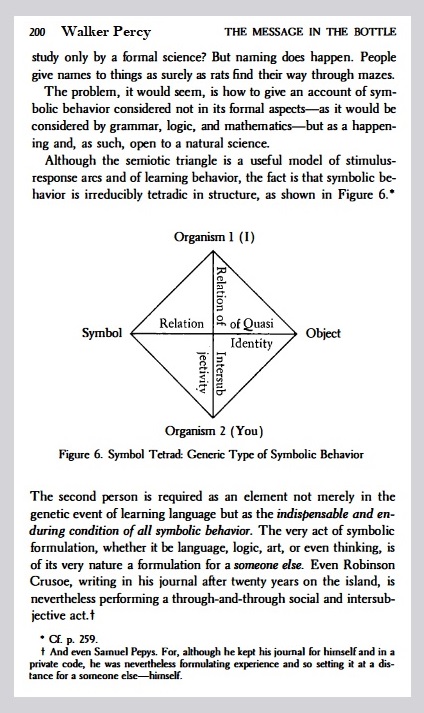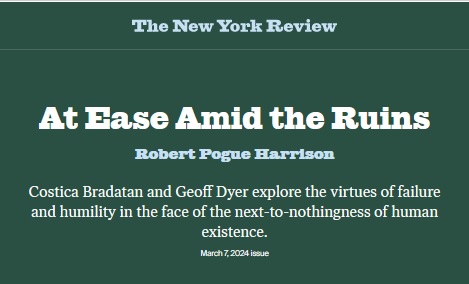Sophists
From David Lavery’s weblog today—
Kierkegaard on Sophists:
“If the natural sciences had been developed in Socrates’ day as they are now, all the sophists would have been scientists. One would have hung a microscope outside his shop in order to attract customers, and then would have had a sign painted saying: Learn and see through a giant microscope how a man thinks (and on reading the advertisement Socrates would have said: that is how men who do not think behave).”
— Søren Kierkegaard, Journals, edited and translated by Alexander Dru
To anyone familiar with Pirsig’s classic Zen and the Art of Motorcycle Maintenance, the above remarks of Kierkegaard ring false. Actually, the sophists as described by Pirsig are not at all like scientists, but rather like relativist purveyors of postmodern literary “theory.” According to Pirsig, the scientists are like Plato (and hence Socrates)– defenders of objective truth.
Pirsig on Sophists:
“The pre-Socratic philosophers mentioned so far all sought to establish a universal Immortal Principle in the external world they found around them. Their common effort united them into a group that may be called Cosmologists. They all agreed that such a principle existed but their disagreements as to what it was seemed irresolvable. The followers of Heraclitus insisted the Immortal Principle was change and motion. But Parmenides’ disciple, Zeno, proved through a series of paradoxes that any perception of motion and change is illusory. Reality had to be motionless.
The resolution of the arguments of the Cosmologists came from a new direction entirely, from a group Phædrus seemed to feel were early humanists. They were teachers, but what they sought to teach was not principles, but beliefs of men. Their object was not any single absolute truth, but the improvement of men. All principles, all truths, are relative, they said. ‘Man is the measure of all things.’ These were the famous teachers of ‘wisdom,’ the Sophists of ancient Greece.
To Phaedrus, this backlight from the conflict between the Sophists and the Cosmologists adds an entirely new dimension to the Dialogues of Plato. Socrates is not just expounding noble ideas in a vacuum. He is in the middle of a war between those who think truth is absolute and those who think truth is relative. He is fighting that war with everything he has. The Sophists are the enemy.
Now Plato’s hatred of the Sophists makes sense. He and Socrates are defending the Immortal Principle of the Cosmologists against what they consider to be the decadence of the Sophists. Truth. Knowledge. That which is independent of what anyone thinks about it. The ideal that Socrates died for. The ideal that Greece alone possesses for the first time in the history of the world. It is still a very fragile thing. It can disappear completely. Plato abhors and damns the Sophists without restraint, not because they are low and immoral people… there are obviously much lower and more immoral people in Greece he completely ignores. He damns them because they threaten mankind’s first beginning grasp of the idea of truth. That’s what it is all about.
The results of Socrates’ martyrdom and Plato’s unexcelled prose that followed are nothing less than the whole world of Western man as we know it. If the idea of truth had been allowed to perish unrediscovered by the Renaissance it’s unlikely that we would be much beyond the level of prehistoric man today. The ideas of science and technology and other systematically organized efforts of man are dead-centered on it. It is the nucleus of it all.
And yet, Phaedrus understands, what he is saying about Quality is somehow opposed to all this. It seems to agree much more closely with the Sophists.”
I agree with Plato’s (and Rebecca Goldstein’s) contempt for relativists. Yet Pirsig makes a very important point. It is not the scientists but rather the storytellers (not, mind you, the literary theorists) who sometimes seem to embody Quality.
As for hanging a sign outside the shop, I suggest (particularly to New Zealand’s Cullinane College) that either or both of the following pictures would be more suggestive of Quality than a microscope:






